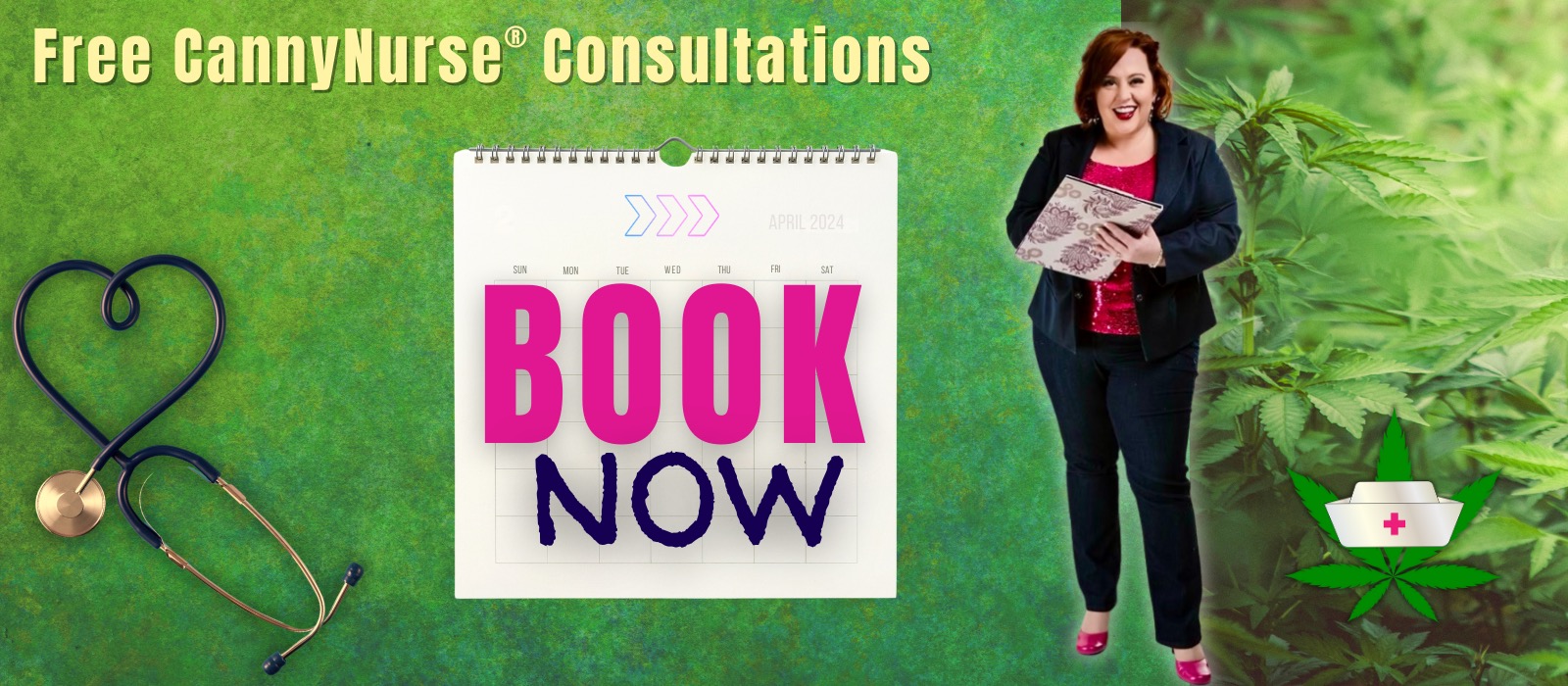Ask a CannyNurse
What to Expect - FAQ's
No. I do not provide cannabis recommendations or assistance in getting a medical card. Please review your local government guidelines for obtaining a doctor’s recommendation or go to Norml to view state laws in the USA. I work with people who already have medical cannabis certifications and people in locations where adult use is allowed. I can also work with people who are using CBD only in places where cannabis with THC is not allowed.
Of course! I began studying cannabis therapeutics in 2020, but have worked as a holistic healer since 2000 and an Integrative Nurse Coach since 2012. My specialty has always been helping people uncover and work toward their life purpose, part of which includes feeling healthy and happy enough to be your best self all day every day.
You may be surprised to hear this, but yes, it very much does! The stereotype of buying whatever the dodgy guy behind the 7-11 had to sell is very different from today’s cannabis marketplace, but that doesn’t mean all cannabis is safe. Cannabis purchased through the illicit market can be contaminated with heavy metals, mold, or other toxins you DO NOT want to put into your body.
Even CBD oils sold over-the-counter or online as “natural” remedies can be full of contaminants, have misguided, erroneous, and false claims, and varying potencies (despite what the label says).
Industrial hemp has been used to clean toxic soil of waste sites (I’m looking at you, Chernobyl) because it excels at pulling toxins and heavy metal out of the soil and into the plant. This makes it incredibly important to know where/ how your cannabis products are grown and to examine the Certificate of Analysis to discern whether the product is safe.
Yes. Some people have tried make distinctions between cannabis and marijuana, but essentially we’re talking about variations of the same plant.
This about it this way: apple trees all produce apples (not oranges), but they’ve been selectively bred (or genetically modified) to produce different varieties of apple. Your pink lady apple tree just will not produce granny smith apples. The same is true of the different “strains” of cannabis: they produce flowers (which are harvested and dried) with different chemical compositions: some are high in THC (the chemical that “gets you high”), some are high in CBD (the non-intoxicating component), and there are a wide variety of terpenes that give the different chemovars (“strains”) their varied smells, tastes, and healing properties.
I use the word cannabis because the Spanish word “marijuana” (anglicized to “marihuana”) has been used throughout history to scare people, capitalizing on anti-Mexican xenophobia and racism. I don’t like the fear-based and hateful way the word marijuana has been used in the past (or the associated racism and xenophobia), so I choose to use the word cannabis instead.
“Strains” is an unscientific term used to describe the many varieties of cannabis. Scientists and clinicians prefer to use the term “chemovars” which is a shortened version of the phrase “chemical variations.”
Each chemovar has a unique combination of chemical constituents that makes it unique. Even within a particular chemovar, an individual plant’s chemical structure can vary depending on it’s growing conditions. This is a normal thing that happens in nature; for example, spicy peppers need harsh growing conditions to actually become spicy. If you take 2 of the same type of pepper plant and grow them in different climates, the level of spiciness will be different between the two plants.
Cannabis can interact with medications and does, in fact, have side effects, despite claims that it is “natural” (which some people assumes means “safe”). This is why it is critical to speak with your recommending doctor about all of your medications, including cannabis.
Interestingly, smoking cannabis is not associated with increased risk for lung, throat, head, and neck cancers the way tobacco products are. This doesn’t mean it is harmless however, and smoking cannabis can be associated with airway irritation and chronic bronchitis. Non-combustion options that don’t light the plant matter on fire, such as dry herb vaporizers may be a less-irritating option for many patients who like the ease of inhaling cannabis.
Cannabis DOES have side effects, but most are dose-dependent. This means that while cannabis can reduce anxiety in low doses, it can cause anxiety in high doses. This is why it is critical for patients to understand evidence-based dosing strategies and become comfortable self-titrating your doses.
There have been no recorded deaths from overdosing on cannabis in history.
However, that doesn’t mean that overdosing doesn’t happen. When doses of THC/ CBD are too high, people can feel terrifying paranoia and other effects. There are a variety of “remedies” found online (drinking lemon juice, smelling pine essential oil, warm showers, etc.) for taking too high a dose, but the evidence is unclear. If it’s possible to go to sleep, that can often be the best option since it takes time to clear the excess cannabinoids from your system.
The world of cannabis is definitely more complicated than it was in the 1960s, 70s, and even 10 years ago. This is where cannabis nurse coaching can be so useful. You will learn how to navigate the current marketplace, including: strains/chemovars, paraphernalia, concentrates, and more.
Being a medical cannabis patient may not offer you legal protection in terms of employment, housing, or other matters. Cannabis is still a Schedule 1 drug and federally illegal. Until that changes, it is important to know your state and local laws. For example, in some jurisdictions it is illegal to own a firearm and be a medical cannabis patient.
It is never safe to drive while intoxicated (from any substance) and care should always be taken when under the influence of mind-altering substances.

